15 Wild Animals in Ghana [Wildlife in Ghana]
Want to know more about the wildlife in Ghana?
Discover 15 wild animals in Ghana in this post, as well as interesting facts about them. 🇬🇭
Learn All About Ghanaian Animals
Ready to learn all about Ghanaian animals?
I’ve always been fascinated by animals, and by how they can be so different from one country to another. In this guide, we’ll focus on the many animals Ghana has on the land, in the sky, and underwater.
I’ve split the guide into 4 categories:
- Native animals from Ghana
- Endangered animals of Ghana
- What is Ghana’s national animal?
- How many animals native to Ghana?
Let’s dive in right away with our first category!
Native Animals from Ghana
Ghana is an African country located in the western part of the continent, below the Sahara. It boasts a wide variety of biomes, from coastal savannas to tropical rainforests, and it used to be a British colony. It is bordered by Burkina Faso, Togo, and the Ivory Coast, and its capital and largest city is Accra, which counts more than 4,200,000 inhabitants (but more than 5,055,000 if you include the metropolitan area).
An interesting part of the country that I wanted to tackle is its wildlife. In light of that, I have listed the best of it, and I hope you will love learning what animals live in Ghana.
Here’s the Ghana animals list.
1. African bush elephant
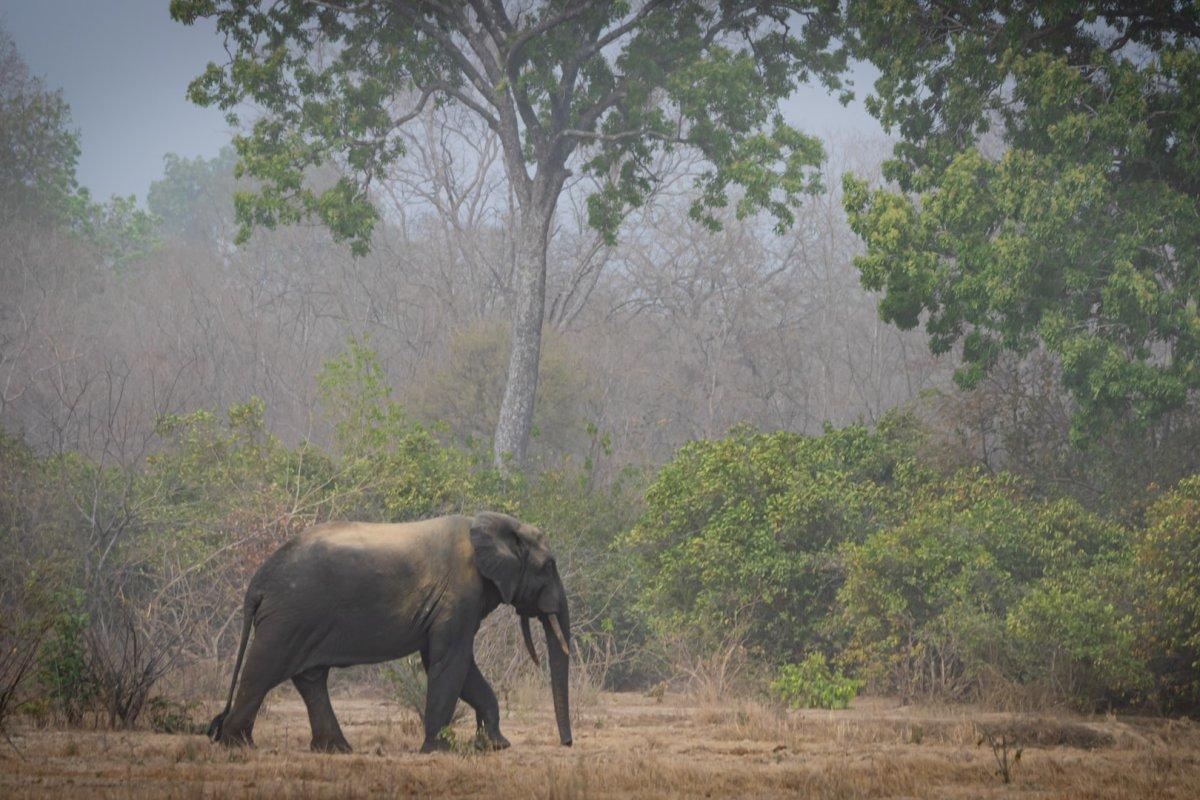
- Name: African bush elephant
- Scientific name: Loxodonta africana
- Conservation status:
The African bush elephant, also known as the African savanna elephant, is one of two species of elephant native to Africa. It is the largest terrestrial animal, reaching up to 3.96 m / 13 ft high, and weighing up to 10.4 t / 11.5 short tons.
Sadly, this animal is infamous for being a prime target for poachers and illegal traders. It is also threatened by diseases and habitat loss.
2. Lion
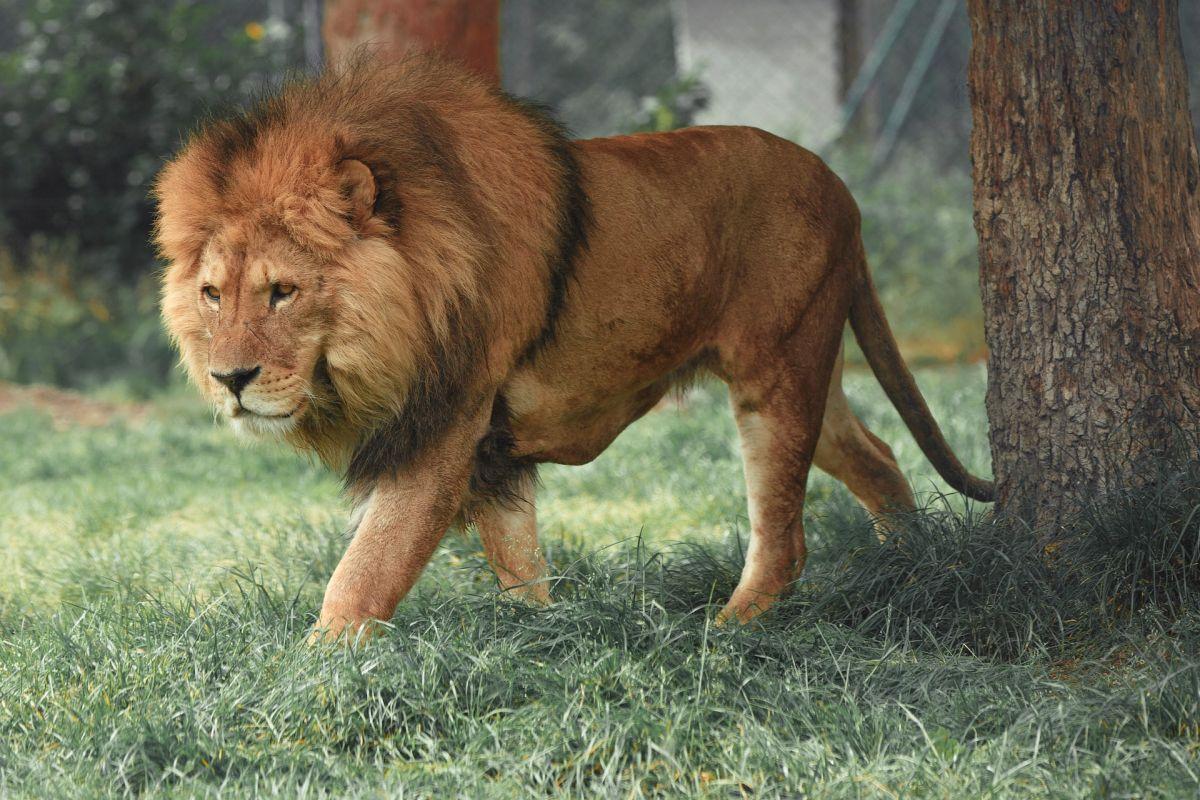
- Name: Lion
- Scientific name: Panthera leo
- Conservation status:
The lion, the king of all the animals, is probably the most iconic animal in the entire continent. It lives in grasslands, shrublands, and savannas, and is a mighty diurnal animal that does not fear anything.
Its population has declined by more than 40 percent in only three decades, despite being one of the most widely recognized animals in culture. It has been depicted in paintings, sculptures, and flags, but still suffers from poaching and habitat loss.
3. Leopard
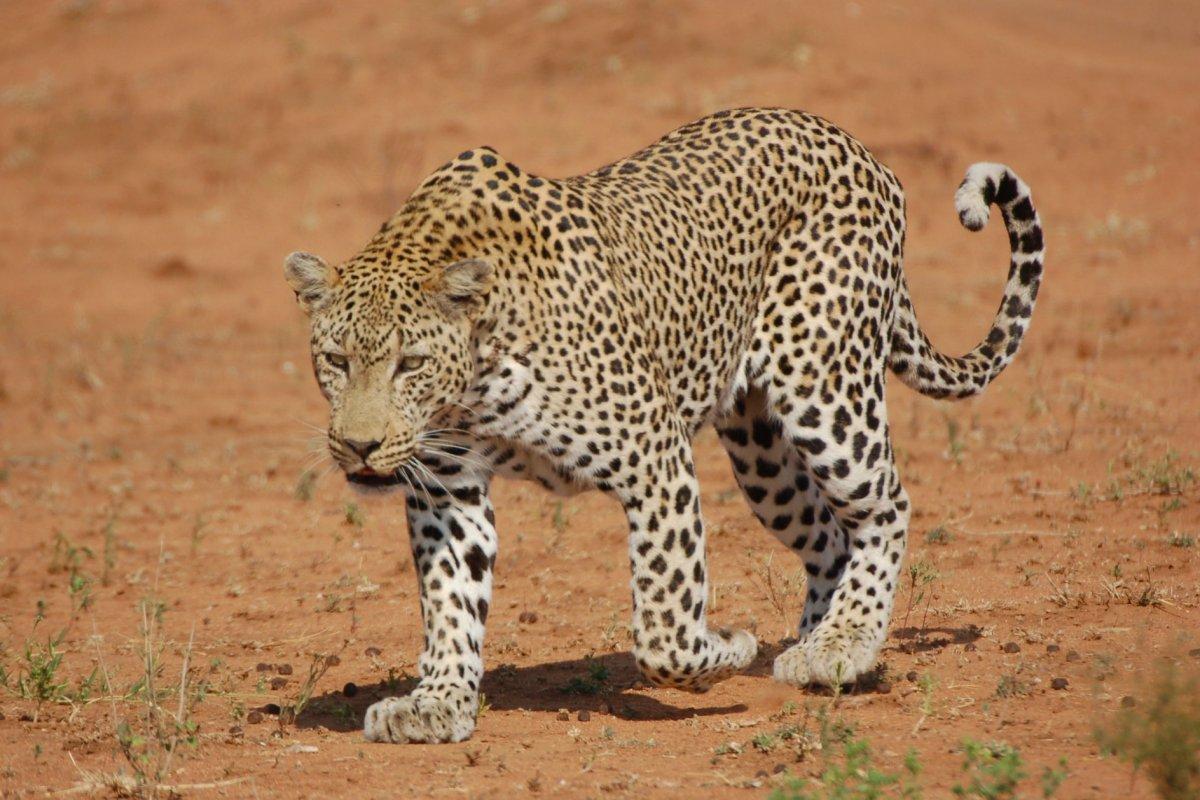
- Name: Leopard
- Scientific name: Panthera pardus
- Conservation status:
The leopard is another species of wild cat, and although it is not the most famous African animal, it is still present in Ghana: actually, it can be found in a wide range throughout sub-Saharan Africa.
This wild cat is currently inhabiting about a quarter of its original range, which is dwindling day by day. It is an opportunistic carnivore that hunts for antelopes and other large mammals most of the time.
4. Chimpanzee

- Name: Chimpanzee
- Scientific name: Pan troglodytes
- Conservation status:
The chimpanzee, also called the chimp, is a species of great ape native to tropical Africa. It lives in forests and savannas and has coarse black fur with long hairs. It is a very intelligent animal that is known to use tools to hunt and find food.
Within its range, there are about 170,000 to 300,000 individuals in the wild, and they gather in groups of 15 to 150 members.
5. Mona monkey
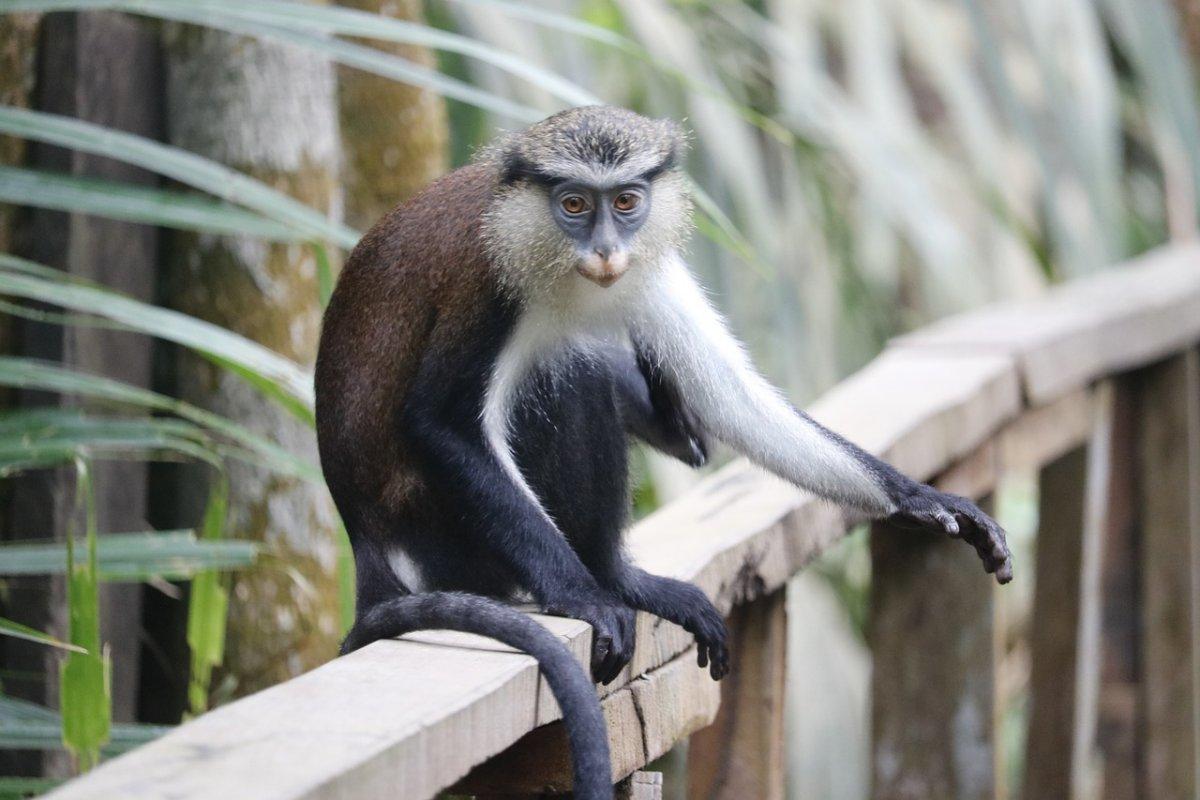
- Name: Mona monkey
- Scientific name: Cercopithecus mona
- Conservation status:
The mona monkey is a species of Old World monkey native to Ghana and Cameroon, in West Africa. It was introduced to the island of Grenada when it traveled with slave ships during the 18th century.
This monkey usually lives in groups of up to 12 members with one mature male, even though larger groups were already seen. Together, they feed on fruit, seeds, insects, and flowers, and they are quite vocal.
6. West African Gaboon viper
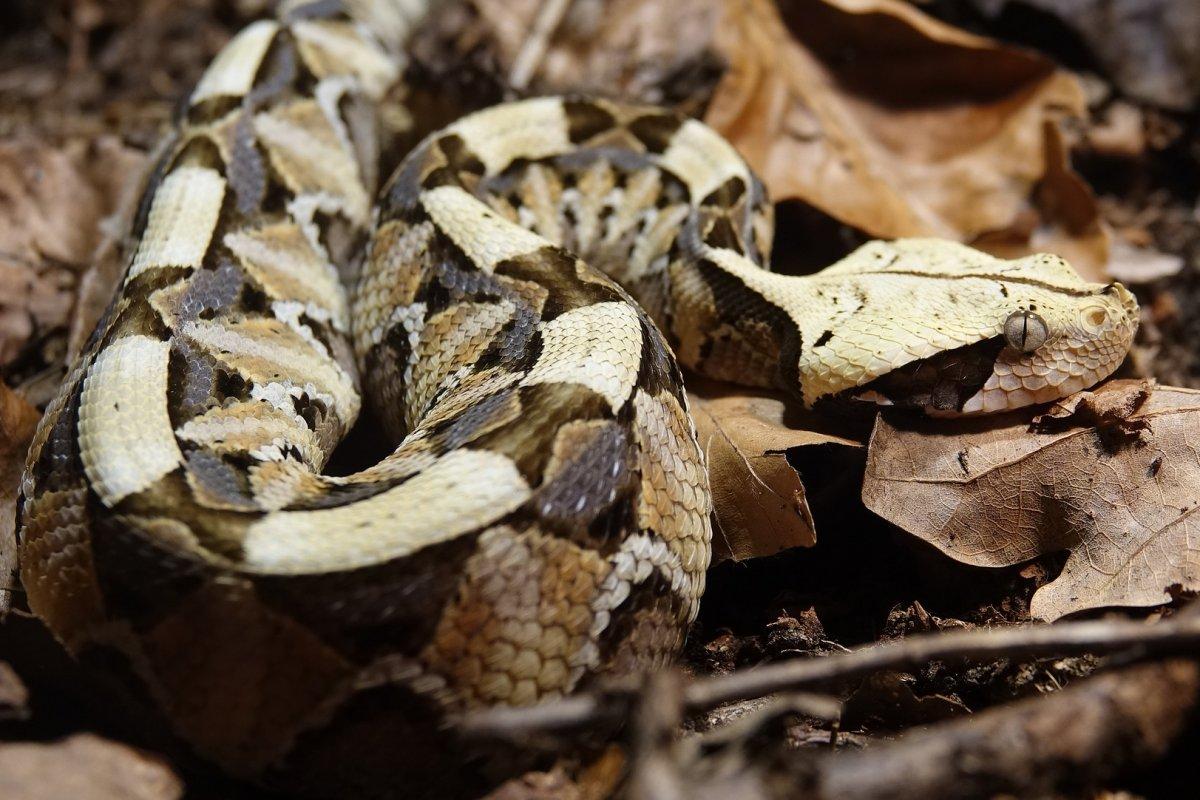
- Name: West African Gaboon viper
- Scientific name: Bitis rhinoceros
- Conservation status:
The West African Gaboon viper, also known as the Gabino viper, is a species of viper endemic to West Africa. Similarly to other vipers, it is venomous. It gets its scientific name from its two large nasal “horns” that make it look like a rhino.
This viper can be found in several West African countries, from Togo to Guinea and Guinea-Bissau, including Ghana, the Ivory Coast, Sierra Leone, and Liberia.
7. Red river hog
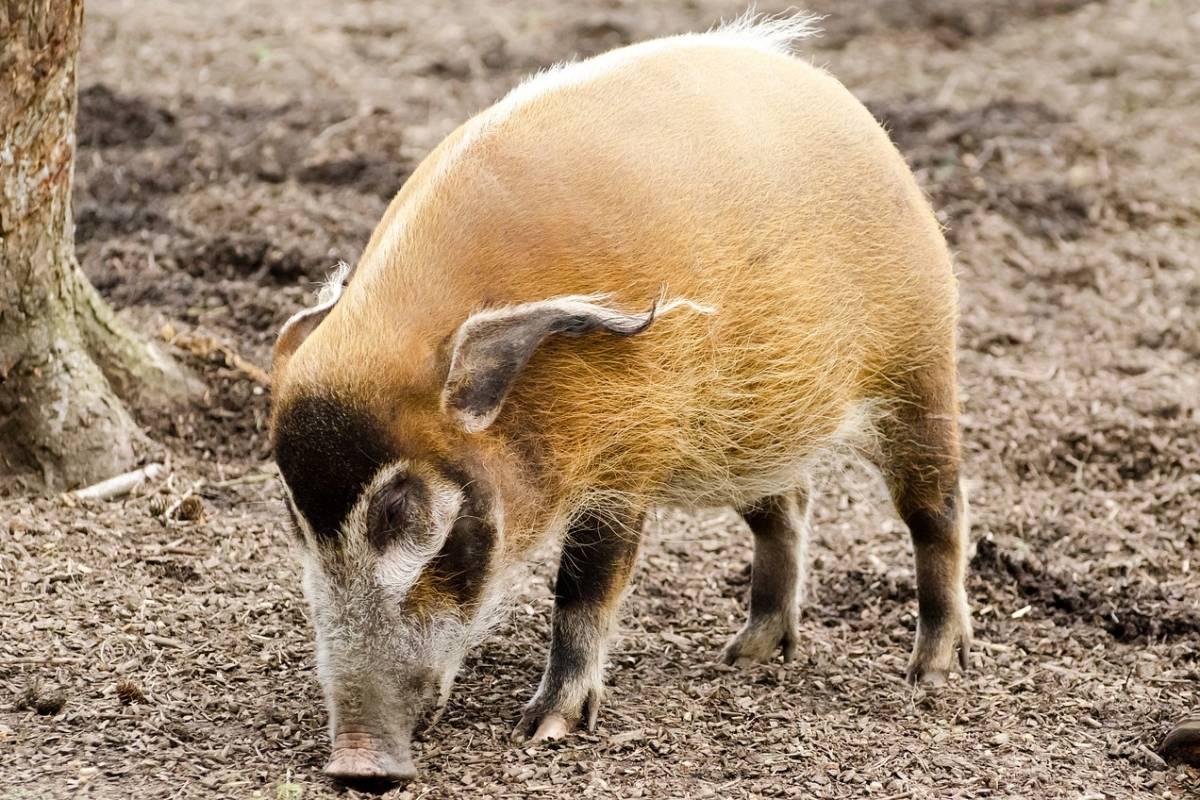
- Name: Red river hog
- Scientific name: Potamochoerus porcus
- Conservation status:
The red river hog, also known as the bushpig, is a species of wild pig native to West Africa, mostly in the Congolese and Guinean forests. It is seldom seen outside of rainforests and prefers swamps or areas near bodies of water.
This hog can be active during the day, but it is mostly a nocturnal or crepuscular animal that lives in small groups of 6 to 10 members and feeds on roots, tubers, fruit, grasses, carrion, and insects.
8. Aardvark
- Name: Aardvark
- Scientific name: Orycteropus afer
- Conservation status:
The aardvark is one of the most peculiar animals in Africa. It lives in almost the entirety of sub-Saharan Africa and is an insectivore with a distinctive, long pig-like snout. This snout is particularly useful to sniff out food, and the aardvark is renowned for its ability to dig out ants and termites from their hills with its particularly strong claws.
This animal is nocturnal and solitary, and is quiet; it only makes soft sounds when foraging or when frightened.
9. Olive baboon
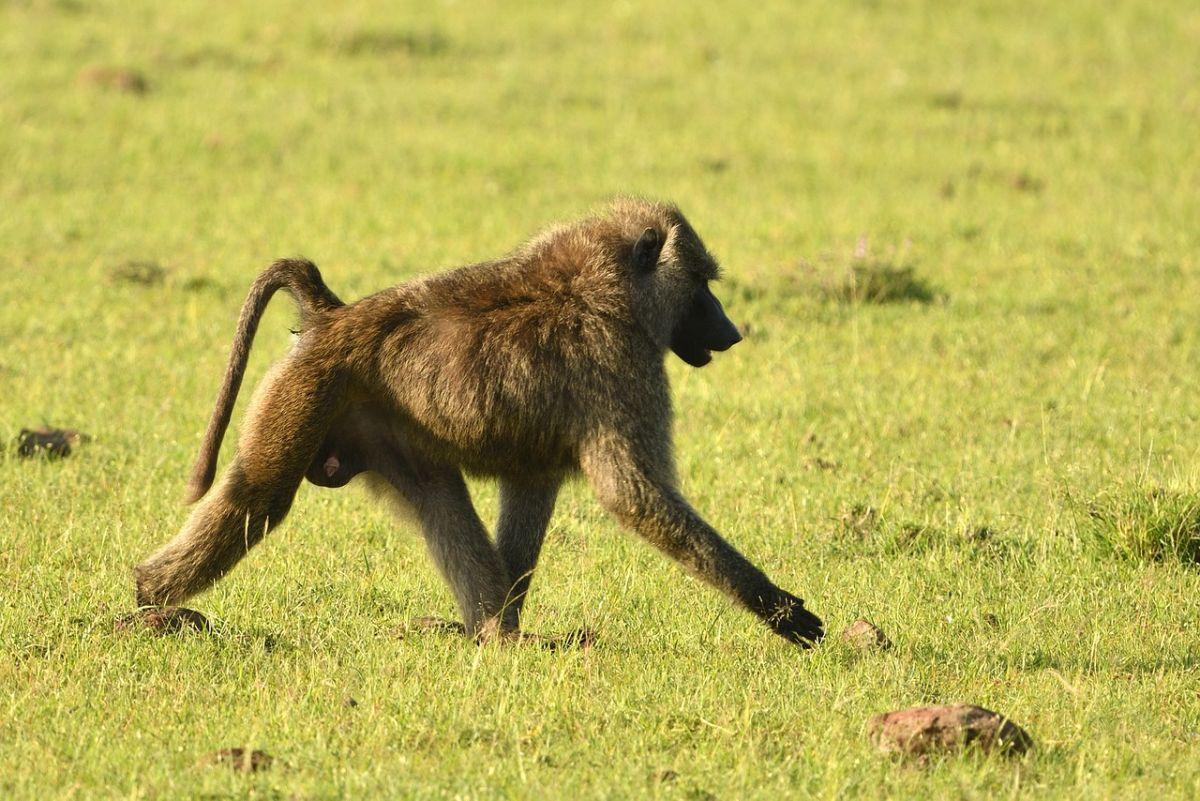
- Name: Olive baboon
- Scientific name: Papio anubis
- Conservation status:
The olive baboon, also known as the Anubis baboon, is a species of Old World monkey native to 25 countries around Africa. It is the most wide-ranging of all baboons, and some isolated populations even live in the mountainous regions of the Sahara.
Its name comes from the color of its coat, it lives in groups with a complex social structure and participates in lots of vocal and non-vocal communications.
10. Hippopotamus
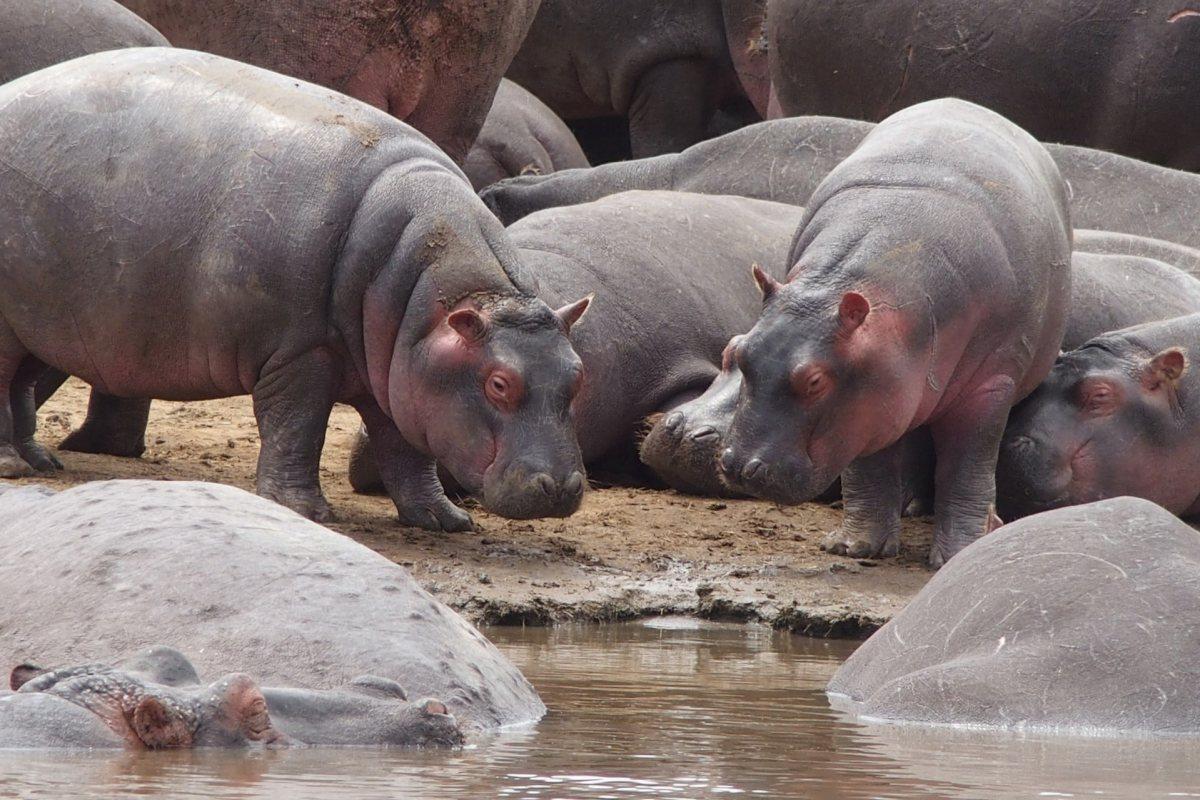
- Name: Hippopotamus
- Scientific name: Hippopotamus amphibius
- Conservation status:
The hippopotamus, formally known as the hippo, is a species of large semi-aquatic mammal native to sub-Saharan Africa. It is herbivorous, and the third-largest land mammal in the world right after the elephant and the rhinoceros.
Despite its peaceful looks, this animal is actually one of the most dangerous ones you will ever encounter! With a very fast pace and unpredictable and particularly aggressive behavior, it is a deadly enemy that you will definitely want to avoid.
11. Serval
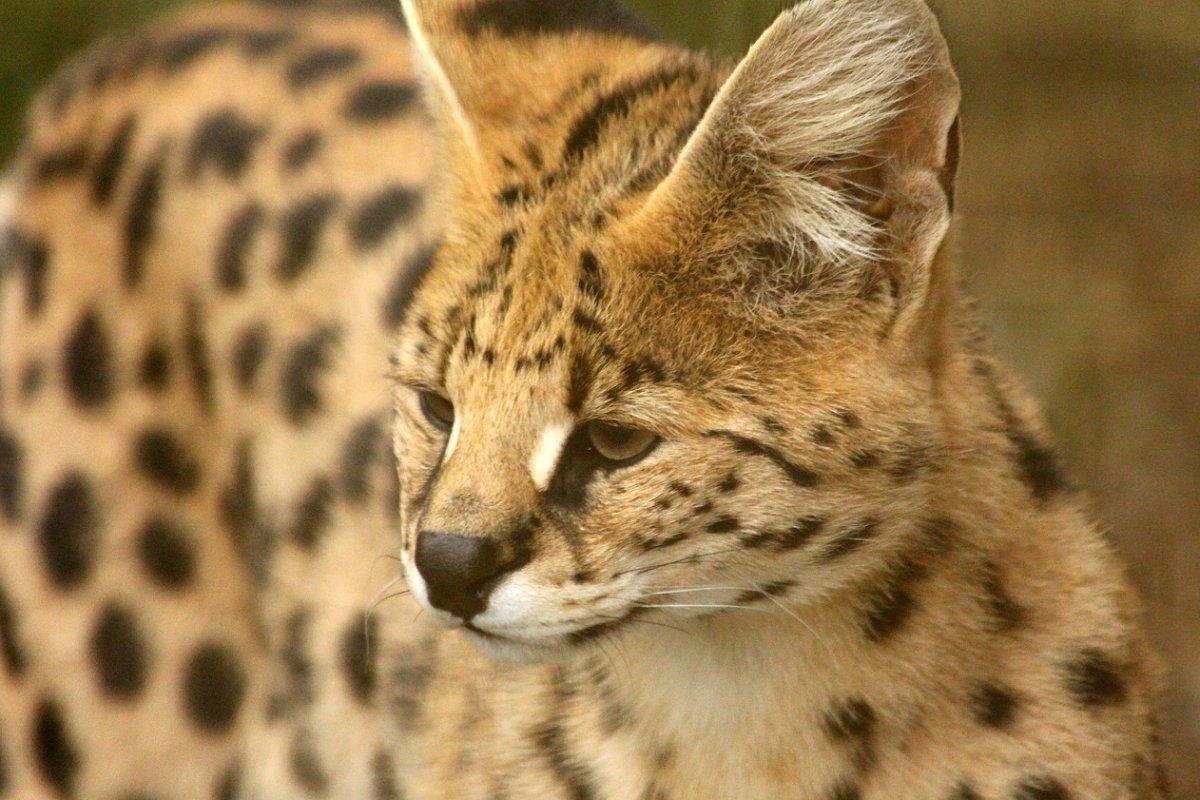
- Name: Serval
- Scientific name: Leptailurus serval
- Conservation status:
The serval is a large species of wild cat native to Africa. Although it is rare in North Africa and the Sahel, it is very widespread in the sub-Saharan areas of the continent, outside of rainforests. This wild cat is a solitary carnivore that is active both by day and at night and preys on small mammals, mostly rodents.
You might think that this kind of animal would be endangered because of poaching, but since it mostly lives in protected areas, it is actually thriving.
12. Spotted hyena
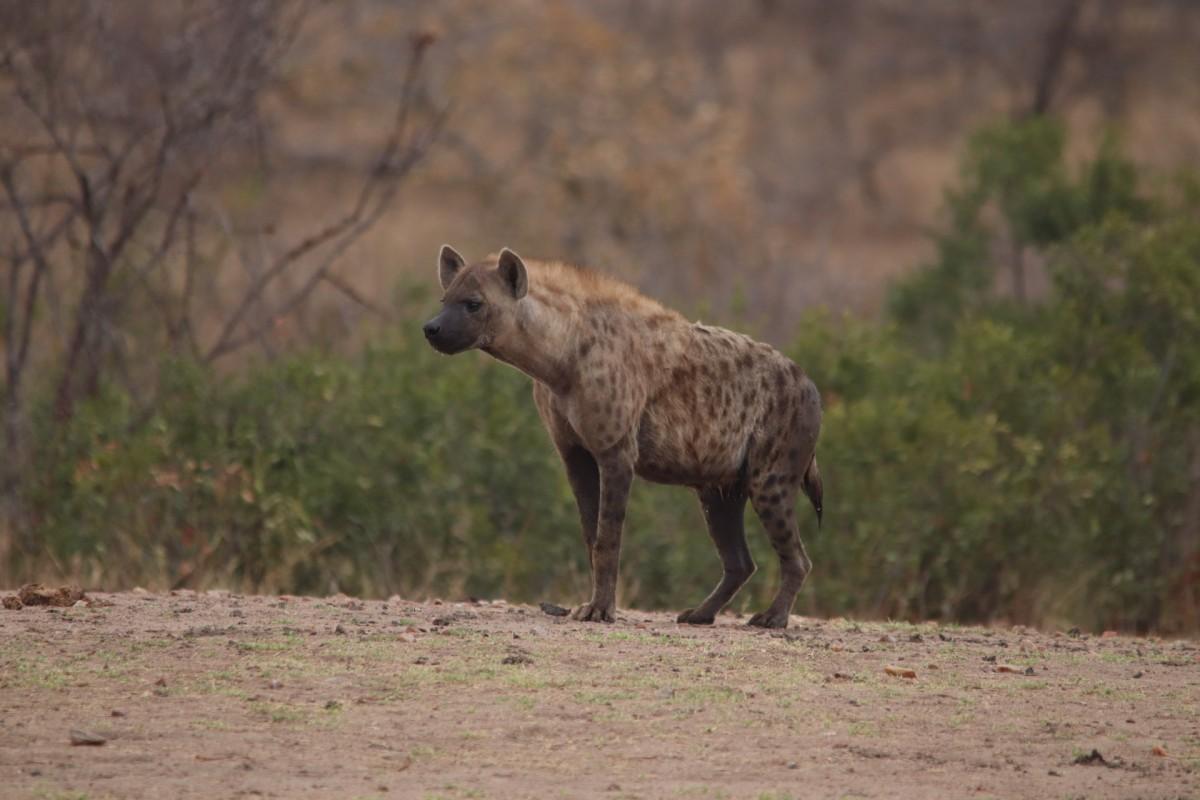
- Name: Spotted hyena
- Scientific name: Crocuta crocuta
- Conservation status:
The spotted hyena, widely known as the laughing hyena, is a species of hyena native to much of sub-Saharan Africa. Contrary to popular belief, it is actually not a scavenger, but definitely a hunter. However, it is highly opportunistic, and will not hesitate to scavenge if needed.
Actually, this opportunism is the major reason for the wide success of the spotted hyena as a species: it is the most common large carnivore in all of Africa, as there are about 27,000 to 47,000 mature individuals in the continent.
13. Atlantic humpback dolphin
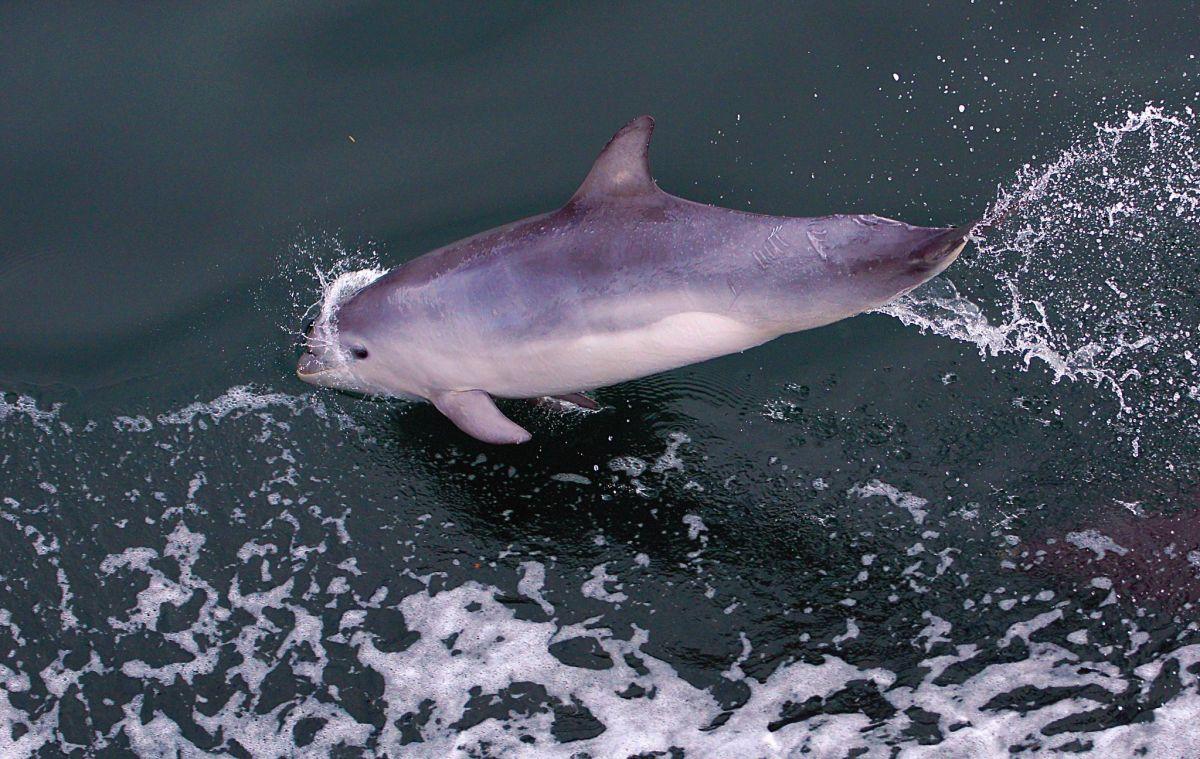
- Name: Atlantic humpback dolphin
- Scientific name: Sousa teuszii
- Conservation status:
The Atlantic humpback dolphin is a species of dolphin native to coastal areas of western Africa. It is a very shy species that is very hard to spot; unlike some other dolphins, it doesn’t do any aerial displays and stays in small groups of 1 to 8 individuals. It is endemic to the Atlantic Ocean and can be found in shallow coastal waters.
Despite being elusive, this dolphin is critically endangered, mostly due to accidental capture in fishing nets, pollution, and overfishing.
14. Orca
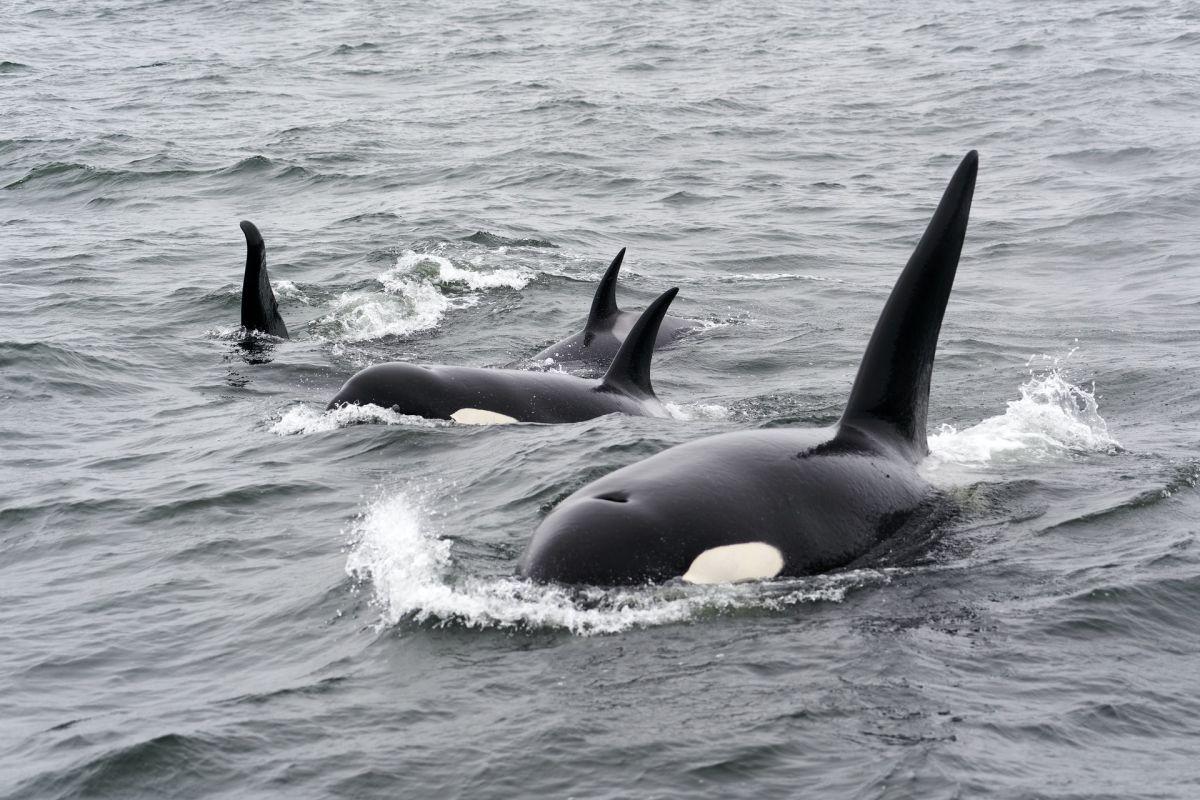
- Name: Orca
- Scientific name: Orcinus orca
- Conservation status:
The orca, formally known as the killer whale, is one of the most dreadful apex predators on the planet. Though not that much is known about this species, especially its populations and numbers, it can be found in any ocean in the world.
This species has a diverse diet, but depending on the areas, it will feed on different prey: seals and dolphins are usually the preferred targets, but whale calves or smaller fishes are also possible on the menu.
15. African palm civet
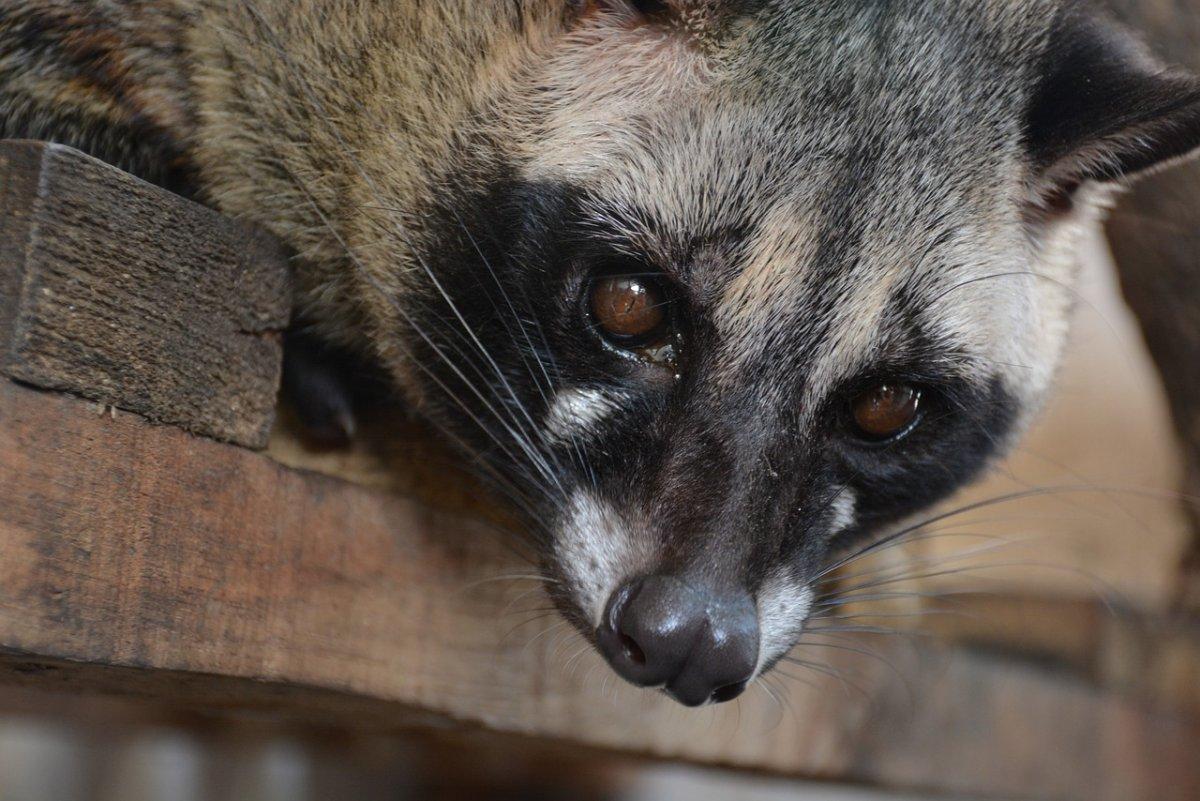
- Name: African palm civet
- Scientific name: Nandinia binotata
- Conservation status:
The African palm civet, also known as the two-spotted palm civet, is a small species of mammal native to sub-Saharan Africa: it can be found in Central and West Africa, usually in rainforests, savanna woodlands and logged forests, up to 2,500 m / 8,200 ft high.
Even though it is listed as least concern, it is seriously threatened by hunting for bushmeat and habitat loss. More than 4,300 African palm civets were hunted every year only in Nigeria, and about 3,300 in Cameroon.
—
So there you have them, these were my 15 wild animals that live in Ghana. I hope you enjoyed this list and that you learned something new today.
In case you want to learn more about Ghana wildlife, feel free to keep reading, as I still have lots of things to tell you about:
Endangered Animals of Ghana
This is definitely the saddest part of the list, but it is very important to raise awareness. Because of this, let’s go through the list of endangered animals in Ghana.
Here are the animals in danger of extinction in Ghana.
- None
- Roloway monkey
- Largetooth sawfish
- Slender-snouted crocodile
- Sand tiger shark
- Home’s hinge-back tortoise
- and 31 more…
- Chimpanzee
- Whitespotted eagle ray
- Egyptian vulture
- Gray parrot
- White-bellied pangolin
- and 44 more…
To see the full list of endangered species in Ghana, head over to the International Union for Conservation of Nature’s Red List.
What is the National Animal of Ghana?
The national animal of Ghana is the bald eagle.
The bald eagle, more famous as the United States national animal, is a large bird of prey with many representations in popular culture. It is a symbol of freedom and of might, and can even be a religious figure.
It is an opportunistic feeder that mostly eats fish, and it builds the largest nest of any North American bird.
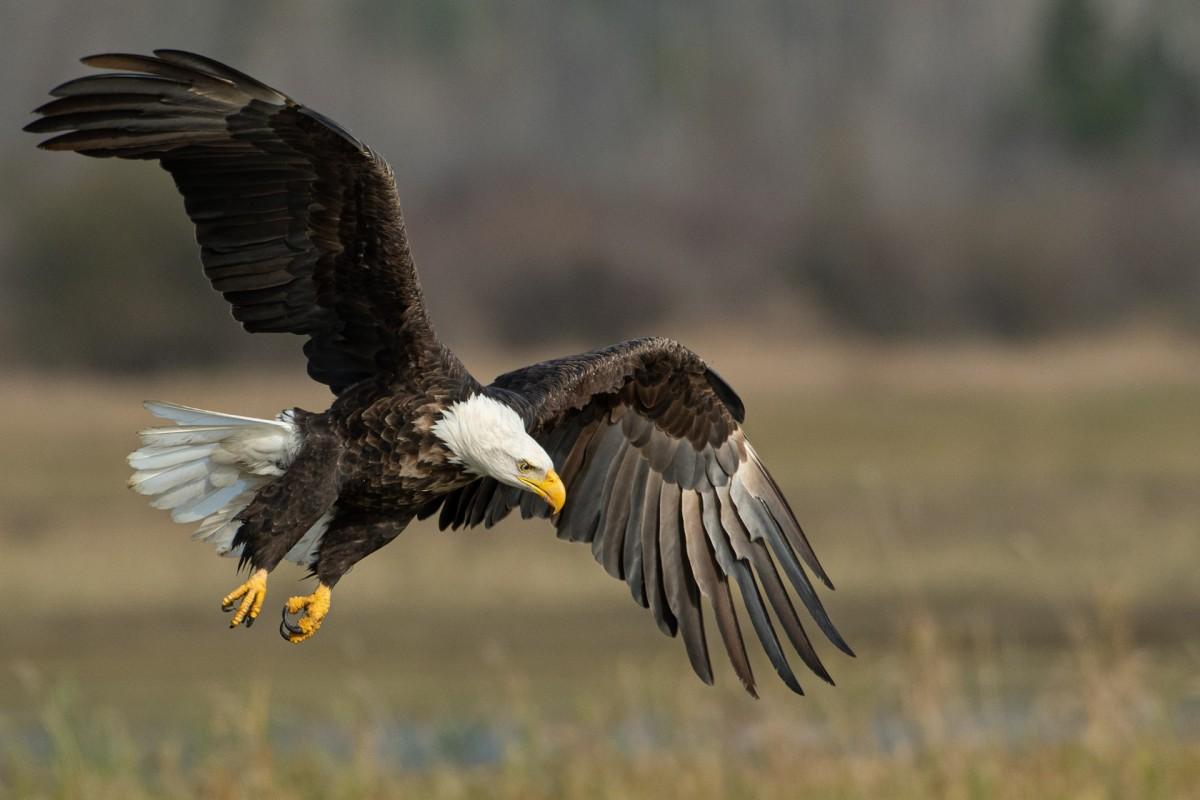
How Many Animals Native to Ghana?
What is the diversity of native animals in Ghana?
Let’s look at the total number of species of Chordata (mammals, birds, fishes, and reptiles).
Total number of animal species in Ghana: 2,318 (14,205 in total in sub-Saharan Africa)
More About Animals in the World!
Loved these Ghana animal facts? Want to see what animals live in other countries?
Then check out these posts:
Or click here to see ALL the facts up on the blog! Spoiler alert: there’s A LOT of them.
Share the knowledge! Click on the buttons below to share information about these famous animals found in Ghana with your friends, and help them learn more about the world 🙂
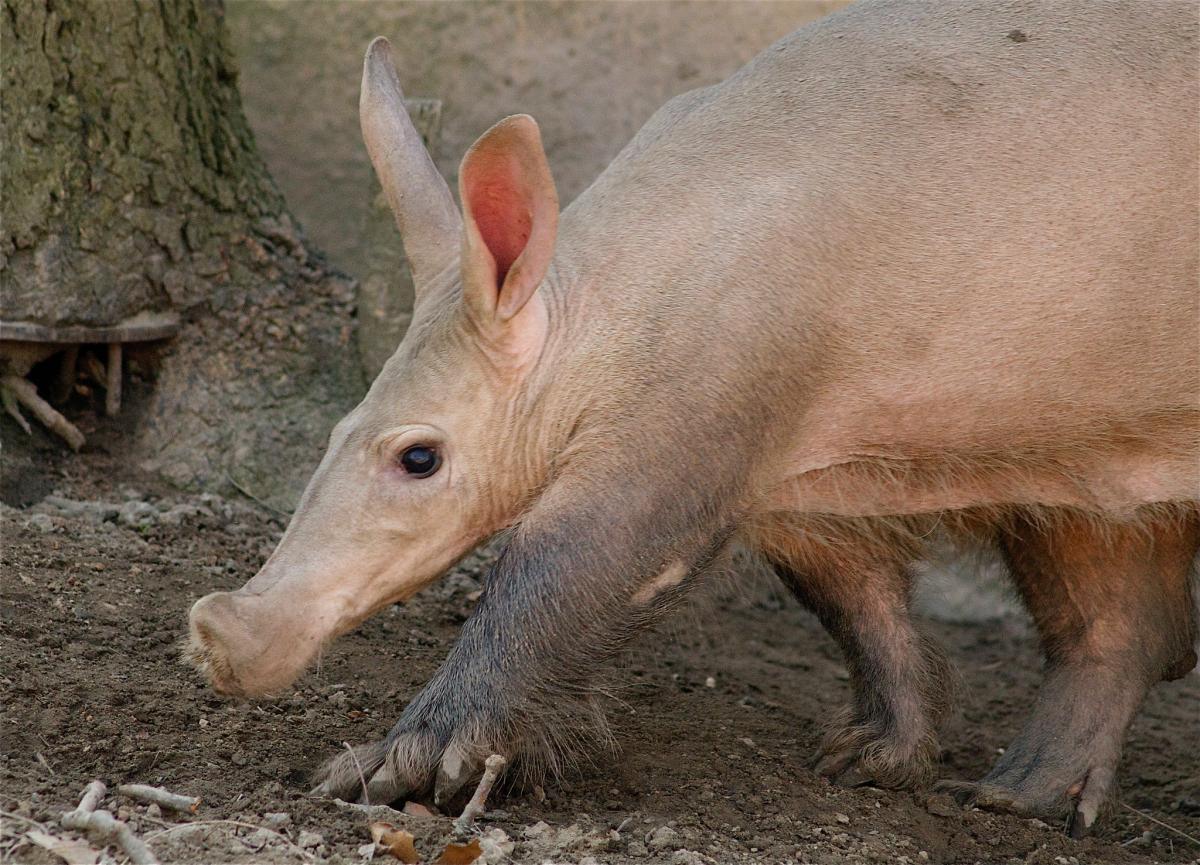

![10 Wild Animals in Nauru [Wildlife in Nauru]](https://www.kevmrc.com/wp-content/uploads/2023/01/10-wild-animals-in-nauru.jpg)
![15 Wild Animals in Benin [Wildlife in Benin]](https://www.kevmrc.com/wp-content/uploads/2022/12/15-wild-animals-in-benin.jpg)
![30 Wild Animals in Australia [Wildlife in Australia]](https://www.kevmrc.com/wp-content/uploads/2023/01/30-wild-animals-in-australia.jpg)